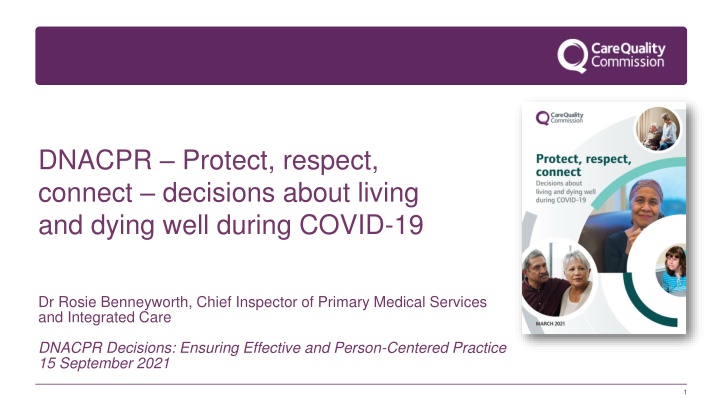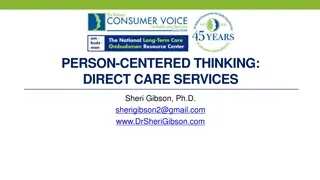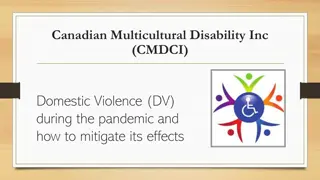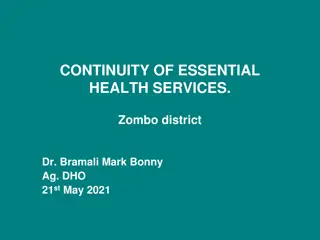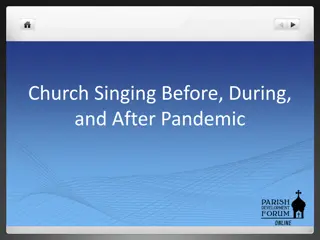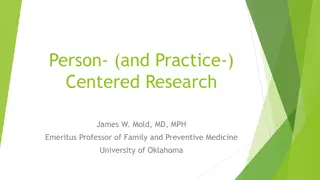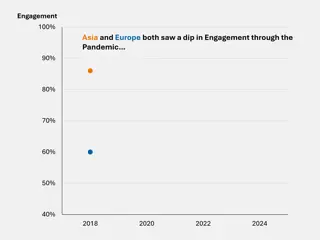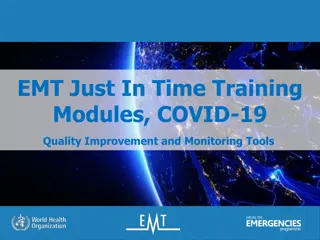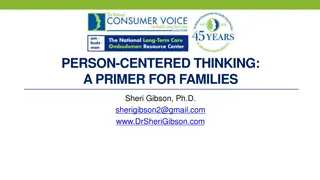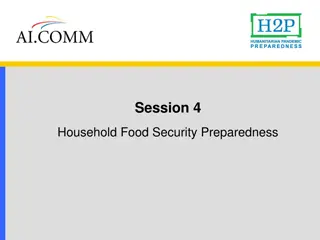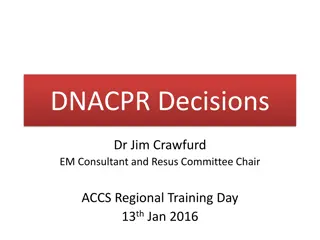Ensuring Person-Centered DNACPR Decisions During the Pandemic
This article discusses the importance of making effective and person-centered decisions about DNACPR during the COVID-19 pandemic. It highlights a case study involving Jim, an elderly man, and his daughter Melanie, emphasizing the need for involving family members in such critical decisions to ensure the patient's wishes are respected and understood. The Care Quality Commission's role in overseeing health and social care services to provide compassionate and high-quality care is also emphasized.
Download Presentation

Please find below an Image/Link to download the presentation.
The content on the website is provided AS IS for your information and personal use only. It may not be sold, licensed, or shared on other websites without obtaining consent from the author.If you encounter any issues during the download, it is possible that the publisher has removed the file from their server.
You are allowed to download the files provided on this website for personal or commercial use, subject to the condition that they are used lawfully. All files are the property of their respective owners.
The content on the website is provided AS IS for your information and personal use only. It may not be sold, licensed, or shared on other websites without obtaining consent from the author.
E N D
Presentation Transcript
DNACPR Protect, respect, connect decisions about living and dying well during COVID-19 Dr Rosie Benneyworth, Chief Inspector of Primary Medical Services and Integrated Care DNACPR Decisions: Ensuring Effective and Person-Centered Practice 15 September 2021 1
Our role and purpose The Care Quality Commission is the independent regulator of health and adult social care in England We make sure health and social care services provide people with safe, effective, compassionate, high-quality care and we encourage care services to improve 2
Our review of DNACPR decisions during the pandemic DNACPR review: an overview In October 2020, the Department of Health and Social Care (DHSC) asked CQC to review how Do Not Attempt Cardiopulmonary Resuscitation (DNACPR) decisions were used during COVID-19 We made our position clear on how DNACPR decisions should be made at the beginning of the pandemic We published an interim report in Dec 2020 based on intelligence received from people sharing their experience, stakeholder groups and reviewing existing guidance This is the final report 3
Jims story About Jim Jim was in his 80s Jim still worked Jim had normally been fit, well and active Jim had a daughter called Melanie Jim went out most weeks in his car to visit friends or go to the cinema. Jim was taken to hospital at the beginning of the pandemic after becoming unwell with a chest infection About 12 hours after being admitted to hospital Jim called Melanie. He was upset and confused, and told her he had signed away his life and was going to die. He told her that a doctor had put an order in place that they wouldn t restart his heart if it stopped. He was upset that he had agreed to it because he didn t want to die. 4
Jims story Melanie told us that she tried to speak to the medical and nursing staff about this decision. She felt that: The conversations were all one way No one asked about her dad, about what he was like and what his life was like at home Because Jim was able to make decisions about his care, no one had discussed the decision with her However, she was concerned that her dad was vulnerable because he was ill, likely to be confused as he had a bad infection, and he was all alone. She felt he would have just gone with what they told him. Jim died while in hospital. Not being allowed to visit because of the pandemic, and the way in which the DNACPR was applied, made his death even more distressing for Melanie and her family. 5
Themes DNACPR review: Themes Concerns raised as part of our scoping exercise were confirmed through fieldwork A mixed picture around blanket and/or inappropriate use of DNACPRs Poor record keeping means that it has not been possible to verify the extent of the problem Information, training and support Consistent national approach Improved oversight and assurance 6
Summaryof findings DNACPR review: Summary of findings Increased pressure on staff time and resource People were involved in decision making but evidence that: people were not always supported there had been blanket DNACPR decisions in place people were not supported in advance care planning conversations, or given the information they needed in an accessible way There was a lack of awareness and confidence among people, families and care workers about what a DNACPR decision meant, and how to challenge this 7
It is vital we get this right and ensure better end of life care as a whole health and social care system, with health and social care providers, local government and the voluntary sector working together. 8
Recommendations Clinicians, professionals and workers must have knowledge, skills and confidence to speak with people and families People must always be at the centre of their care Everyone needs to have access to equal and non- discriminatory personalised support DNACPR decisions need to be recognised as part of wider conversations about advance care planning and end of life care. These decisions need to be made in a safe way that protects people s human rights Professionals and patients need support so they all share the same understanding and expectations for DNACPR decisions Support is needed for people to understand what good practice looks like for DNACPR decisions People need to have more positive and seamless experiences of care Responsible: Department of Health and Social Care CQC must continue to seek assurance that people are at the centre of personalised, high- quality and safe experiences of DNACPR decisions Integrated care systems need to be able to monitor and assure themselves of the quality and safety of DNACPR decisions Health and social care providers must ensure that all workers understand how to speak up There must be comprehensive records of conversations and agreed decisions Responsible: Care Quality Commission 9
Thank you and any questions? Dr Rosie Benneyworth Chief Inspector Primary Medical Services and Integrated Care www.cqc.org.uk enquiries@cqc.org.uk @CQCProf youtube.com/user/cqcdigitalcomms facebook.com/CareQualityCommission 10
